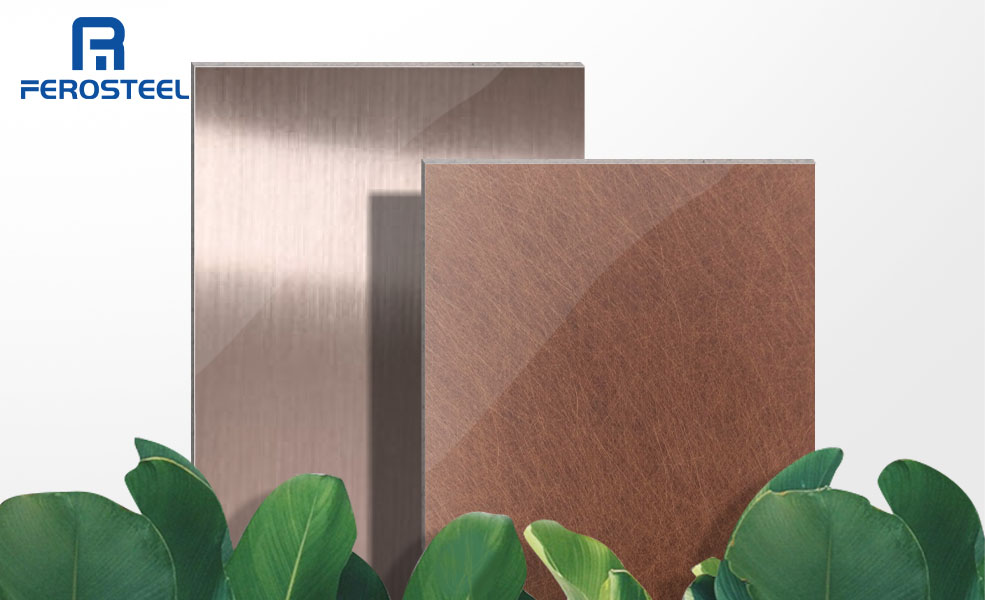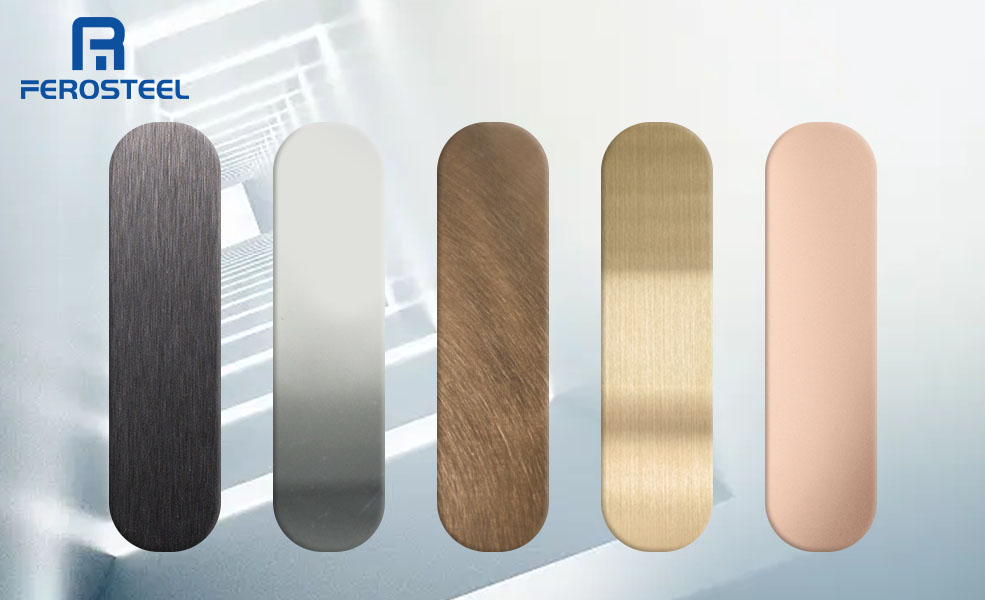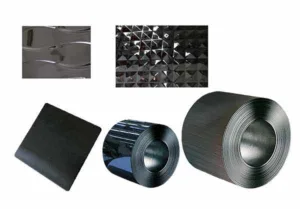
A. Brief explanation of stainless steel metal panels – Stainless steel metal panels are flat sheets made of stainless steel, a versatile and durable material widely used in various industries. – These panels are known for their exceptional strength, corrosion resistance, and hygienic properties.
B. Importance and versatility of stainless steel finishes – Stainless steel metal panels finishes enhance the aesthetic appeal of metal panels and provide additional benefits such as increased durability and ease of maintenance. – Different types of finishes offer a range of appearances and textures to suit various applications.
Why are Stainless Steel Metal Panels the Ideal Choice for Enhancing Design Projects?
Stainless steel metal panels offer unmatched durability and versatility for a wide range of design projects. With their sleek appearance and resistance to corrosion, these panels are ideal for both interior and exterior applications. Whether used for wall cladding, façades, or decorative accents, stainless steel metal panels provide a timeless elegance that enhances any space. Their customizable sizes, finishes, and patterns allow for tailored solutions, making them a top choice among architects and designers. Discover the limitless possibilities of stainless steel metal panels and elevate your next project to new heights of sophistication and style.
Characteristics of Stainless Steel Metal Panels
A. Durability and strength – Stainless steel metal panels are highly resistant to impacts, bending, and deformation, making them suitable for demanding environments. – They maintain their structural integrity even under extreme temperatures and harsh conditions.
B. Corrosion resistance – Stainless steel metal panels are renowned for their exceptional resistance to corrosion, making them ideal for applications exposed to moisture, chemicals, and saltwater. – This resistance helps prolong the lifespan of the panels and reduces the need for frequent replacements.
C. Hygienic properties – Stainless steel metal panels have a smooth, non-porous surface that discourages bacterial growth and facilitates easy cleaning. – They are commonly used in food processing, healthcare, and pharmaceutical industries where cleanliness is paramount. D. Heat and fire resistance – Stainless steel panels exhibit excellent heat resistance, making them suitable for applications where exposure to high temperatures is expected. – They have a high melting point and do not contribute to the spread of fire.
Types of Stainless Steel Finishes

A. Brushed finish
- Description and appearance – Brushed finish stainless steel metal panels have a distinctive linear texture achieved through abrasive brushing. – The surface showcases fine parallel lines, giving a matte or satin-like appearance.
- Common applications – Brushed finish panels are commonly used in architectural applications such as wall cladding, elevator interiors, and signage. – They also find applications in appliances, furniture, and decorative accents.
B. Mirror finish
- Description and reflective properties – Mirror finish stainless steel panels have a highly reflective surface that resembles a mirror. – They undergo a polishing process to achieve a smooth and reflective appearance, free from visible grain lines.
- Utilization in architectural design – Mirror finish panels are often utilized in architectural design to create visually striking elements like facades, column covers, and decorative features. – They reflect light and surroundings, adding a sense of brightness and spaciousness to interior and exterior spaces.
C. Satin finish
- Subtle and smooth texture – Satin finish stainless steel panels have a soft and silky texture, achieved through a combination of brushing and polishing techniques. – They exhibit a low sheen and a uniform surface with fine parallel lines.
- Applications in appliances and kitchenware – Satin finish panels are commonly used in appliances, kitchenware, and equipment due to their fingerprint resistance and ease of cleaning. – They provide a modern and elegant aesthetic to surfaces such as countertops, sinks, and range hoods.
D. Patterned finish
- Textured surface designs – Patterned finish stainless steel metal panels feature embossed or engraved patterns on the surface, adding visual interest and texture. – The patterns can range from geometric shapes to artistic designs.
- Use in decorative applications – Patterned finish panels are popular for decorative applications such as wall coverings, ceiling panels, and elevator interiors. – They offer a unique and customized look to spaces, enhancing the overall design aesthetic.
Benefits and Applications of Stainless Steel Metal Panels
Architectural applications
1. Exterior cladding – Stainless steel metal panels, with their durability and corrosion resistance, are widely used as exterior cladding materials for buildings. – They provide protection against weather elements while adding a sleek and modern appearance.
2. Interior design elements – Stainless steel panels are employed in interior design to create visually appealing features such as wall panels, partitions, and decorative accents. – They contribute to a contemporary and stylish atmosphere in various settings, including offices, hotels, and retail spaces.
Industrial and commercial uses
1. Food processing and pharmaceutical industries – Stainless steel panels are extensively used in food processing facilities, pharmaceutical laboratories, and cleanrooms. – Their hygienic properties and resistance to chemicals make them ideal for maintaining sterile environments.
2. Automotive and transportation sectors – Stainless steel panels find applications in the automotive industry for components like body panels, exhaust systems, and trims. – They offer excellent corrosion resistance, strength, and aesthetic appeal for both functional and decorative purposes.
Residential applications
1. Kitchen and bathroom fixtures – Stainless steel panels are commonly used for kitchen appliances, sinks, countertops, and backsplashes. – Their sleek and modern appearance, along with resistance to stains and heat, makes them a popular choice.
2. Furniture and home decor – Stainless steel panels are incorporated into furniture and home decor items like tables, chairs, shelving units, and decorative sculptures. – They provide a contemporary and elegant touch, blending well with various interior design styles.
Maintenance and Care for Stainless Steel Finishes

A. Cleaning techniques and products – Regular cleaning with mild detergent and warm water, followed by rinsing and drying, helps maintain the appearance of stainless steel finishes. – Avoid using abrasive cleaners or steel wool that could scratch the surface.
B. Protection against scratches and stains – Applying protective films or using specialized coatings can help prevent scratches and stains on stainless steel panels. – Using cutting boards and avoiding contact with harsh chemicals can also preserve the finish.
C. Regular maintenance tips – Inspecting for any signs of damage or corrosion regularly and addressing them promptly. – Following manufacturer’s guidelines for maintenance and care. – Periodically applying stainless steel cleaner or polish to restore and enhance the finish.
Stainless Steel Finish FAQs
Stainless steel sheets a suitable choice for exterior cladding?
Stainless steel metal panels possess exceptional durability and corrosion resistance, making them well-suited for exterior applications.
They provide protection against harsh weather conditions and maintain their structural integrity over time.
Additionally, stainless steel finishes offer a sleek and modern appearance, enhancing the overall aesthetic appeal of buildings.
Are stainless steel finishes easy to maintain?
Yes, stainless steel finishes are relatively easy to maintain.
Regular cleaning with mild detergent and warm water, followed by thorough drying, helps keep the panels in good condition.
Avoiding abrasive cleaners and using non-scratch cleaning tools is recommended to prevent damage to the finish.
Applying protective films or coatings can also help safeguard against scratches and stains.
What are the advantages of using stainless steel panels in the food processing industry?
Stainless steel panels are highly advantageous for the food processing industry due to their hygienic properties and corrosion resistance.
The smooth and non-porous surface of stainless steel prevents the growth of bacteria, making it easy to maintain cleanliness and meet stringent hygiene standards.
Additionally, stainless steel is resistant to chemicals commonly used in food processing, ensuring the integrity of the panels even in demanding environments.
The durability and strength of stainless steel panels make them suitable for withstanding rigorous cleaning and sanitization processes required in the industry.



